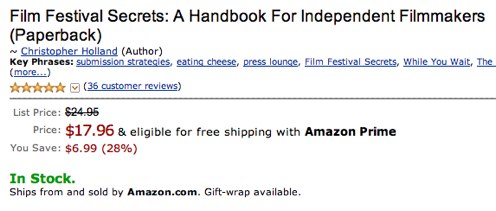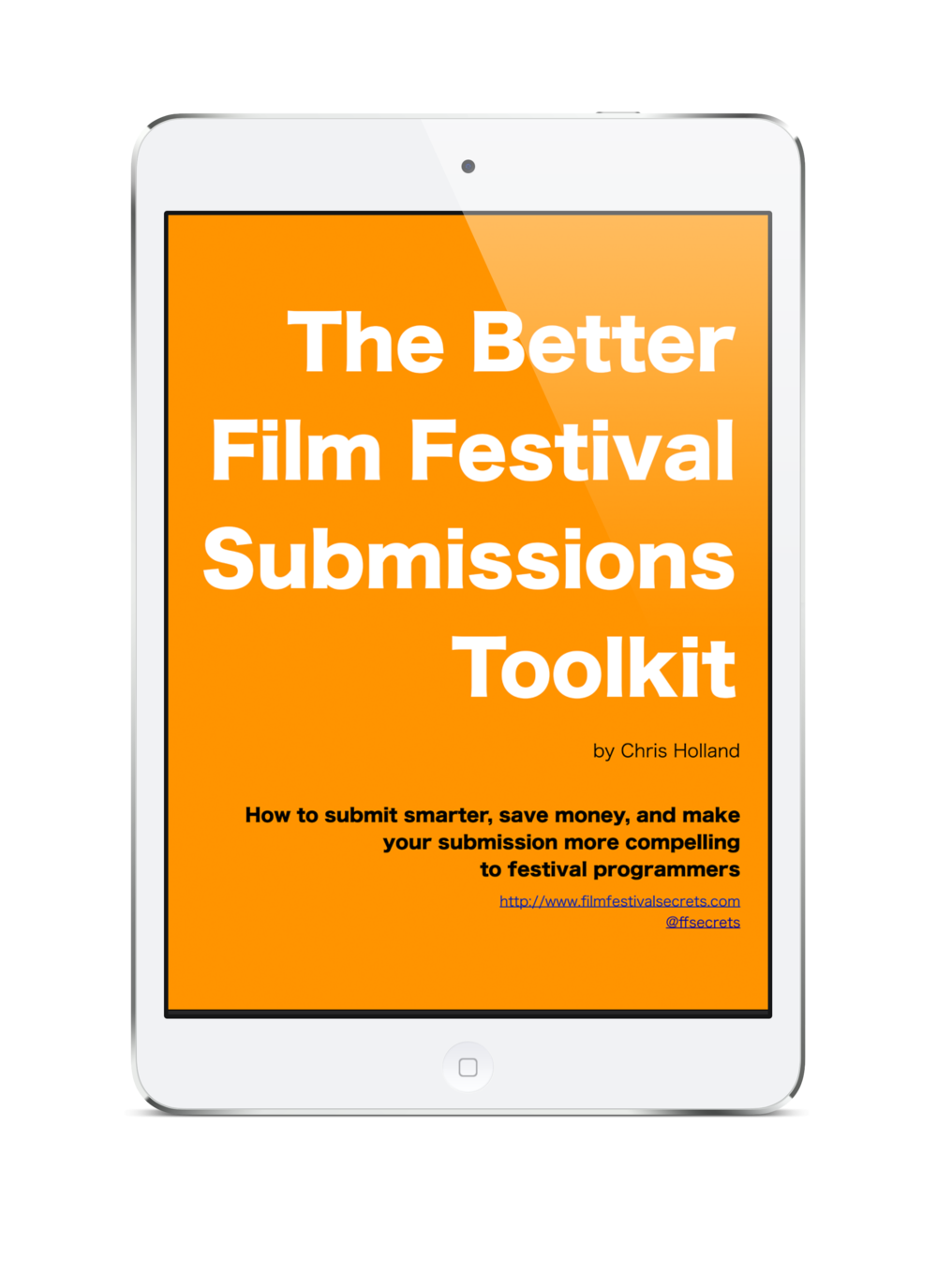 The Sundance Film Festival announces its slate today. I know a lot of filmmakers who submitted to the festival this year. For their sake and mine I don't really go into the nitty-gritty numbers of how few films – no matter how good – get into this most coveted of festivals. Now that most of them have heard a yes or now, however, it might actually help their spirits to know the truth. (Last year I wrote a kind of pep talk piece on this subject that you're welcome to read.)
Let's do some back-of-the-napkin calculations here. According to what a Sundance programmer told me last year when I was writing Film Festival Secrets (the book), about 8,000 titles were submitted to Sundance last year, and that number could have gone as high as nine or ten thousand this year. Let's use the conservative 9,000 for now. Checking out last year's program guide reveals that Sundance programs fewer than 200 films total, including shorts. So 200/9000 = .022. Only two percent of the films submitted get into the Sundance Film Festival.
The Sundance Film Festival announces its slate today. I know a lot of filmmakers who submitted to the festival this year. For their sake and mine I don't really go into the nitty-gritty numbers of how few films – no matter how good – get into this most coveted of festivals. Now that most of them have heard a yes or now, however, it might actually help their spirits to know the truth. (Last year I wrote a kind of pep talk piece on this subject that you're welcome to read.)
Let's do some back-of-the-napkin calculations here. According to what a Sundance programmer told me last year when I was writing Film Festival Secrets (the book), about 8,000 titles were submitted to Sundance last year, and that number could have gone as high as nine or ten thousand this year. Let's use the conservative 9,000 for now. Checking out last year's program guide reveals that Sundance programs fewer than 200 films total, including shorts. So 200/9000 = .022. Only two percent of the films submitted get into the Sundance Film Festival.
As John Cooper, Director of the Sundance Film Festival put it in a tweet earlier today: "3724 features submitted and we can only invite 113. So many tough choices. For me, a very good news-bad news day."
(It has been pointed out to me that this means that three percent of feature films got in, but who's counting?)
The numbers aren't really much better at any other large-to-medium festival, though I estimate that acceptance rates hover between 3% and 8%. This isn't a criticism of these festivals, merely a statement of the way it is. There are more films being made and submitted than ever before, and the large, well-known festivals can't grow their programs fast enough to keep up. The selection process at a festival like Sundance isn't about finding great films – it's about figuring out which great films you want to show. As I told a client just the other day: "I think you made a film that's good enough for Sundance, but whether it's the kind of film that Sundance is in the mood for right now is the real question."
The good news is that there are now more small-to-medium sized festivals than ever before, and that the number of really great festival-worthy films hasn't kept up with that growth either. So while it may be a programmer's market at the top of the heap, there are plenty of festivals further down on the pyramid who are hungry for quality movies that haven't yet had their world or national premieres. Sure, it would be great to premiere at Sundance or AFI Fest or Berlin. The trick is to stay in the game long enough – and to keep making movies good enough – that you're in the right place when your right time comes along.

 Tomorrow is the last day to get your film submission postmarked for consideration at the
Tomorrow is the last day to get your film submission postmarked for consideration at the 


 The
The 